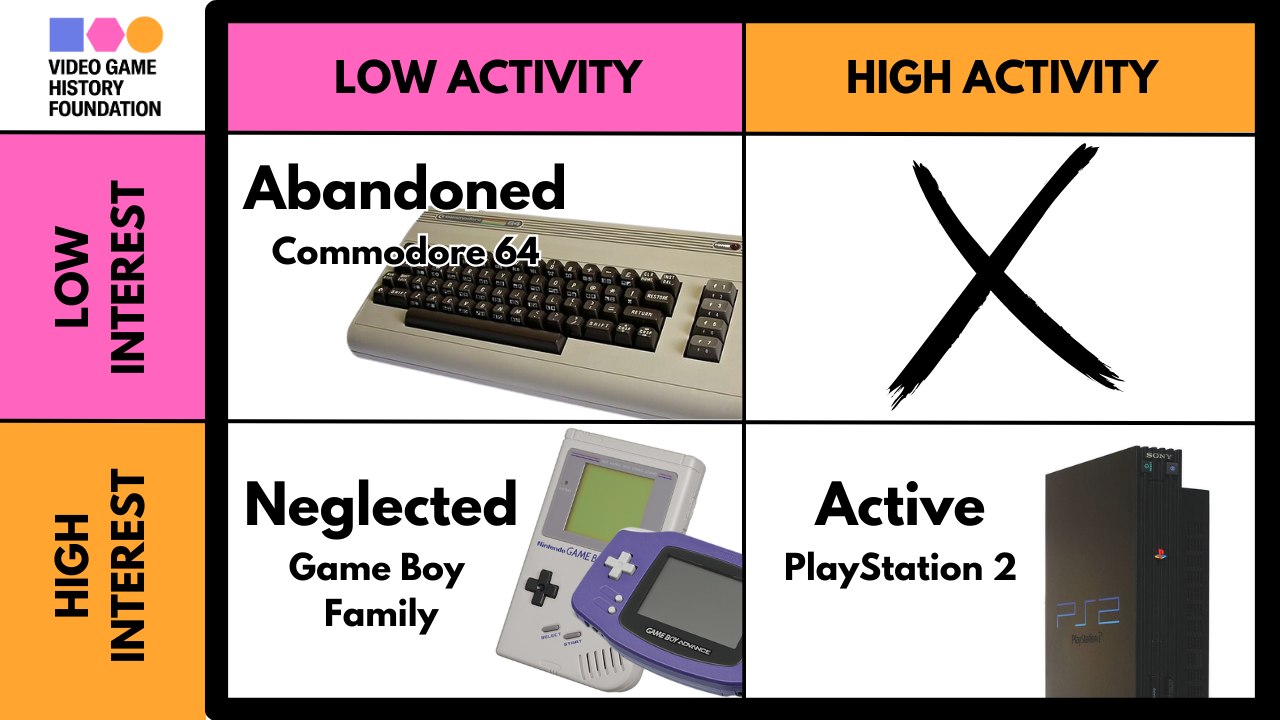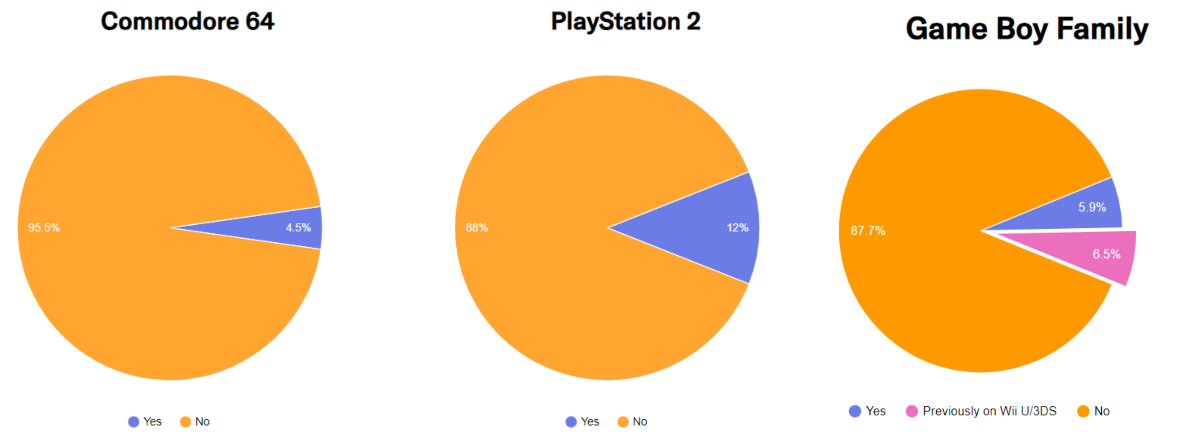Preservation is one of the biggest issues in the games industry, as more classic titles fade into history every year. The Video Game History Foundation’s new study sheds light on the commercial and cultural availability of such games.

Wasteland for Commodore 64 (via MobyGames)
The Video Game History Foundation (VGHF) partnered with the Software Preservation Network for the study, which is now available on Zenodo.
“If we want to have a productive conversation about game preservation, we need an accurate understanding of where things stand right now,” VGHF library director Phil Salvador said in an explanatory note.
The study is based on a random sample of 1,500 video games released in the US prior to 2010 (the list was obtained from the MobyGames database). The VGHF broke down game ecosystems into three categories: abandoned (Commodore 64), neglected (Game Boy family), and active (PlayStation 2).

- Only 13.27% of classic video games* published in the US are currently available for purchase. The share is significantly lower for the Commodore 64 platform, where just 4.5% of all titles remain in release (i.e. legally available in physical or digital format).
* Classic or historical video games are defined as titles produced for a platform or operating system that is no longer in production or being supported. The study doesn’t include remakes or other versions of older games that are substantially different from the original.
- Even the PlayStation 2, a relatively modern and more active ecosystem compared to the completely abandoned Commodore 64, has a reissue rate of just 12%.
- The average rate for all video games released prior to 1985 is 2.59%. “This is evidence that the interests of the marketplace do not align with the needs of video game researchers,” the study reads.
- The practice of reissuing historical video games doesn’t solve the problem of preserving history, since nearly 90% of all such titles can only be accessed from the second-hand market, visiting a library collection in person, or resorting to piracy.

Between 1960 and 2009, there was no five-year period with over 20% game availability
- The overall game availability rate is comparable to pre-World War II audio recordings and American silent-era films, where only 10% and 14% of items have survived, respectively.
- Sometimes platform holders make things worse by eliminating the legacy of their neglected hardware — e.g. Nintendo’s decision to shut down its 3DS and Wii U digital stores resulted in removing roughly 1,000 digital-only titles from release.
- Although Nintendo tries to recommercialize Game Boy games, the reissue rate for titles in the family is only 5.9%, comparable to Commodore 64 games.
- The industry-wise survival rate of older titles is even more alarming, as “only 1 of the 132 games in our sample released before 1980 has been reissued.”

Game availability by ecosystem
- Researchers concluded that poor preservation levels are not the fault of particular companies or platform holders, but a crisis for the entire medium of video games.
- “What we’re asking with this report is for the game industry to acknowledge that most classic games are out of print, and that the commercial market alone can’t solve this,” Salvador wrote, urging libraries to help make playing historical video games as simple as reading classic novels or watching classic movies.
- Brandon Butler, director of information policy, University of Virginia Library, demanded that policymakers solve the problem by adjusting copyright laws because “if we lose access to our digital cultural heritage, it’s not a market failure; it’s a policy failure.”
For more in-depth analysis, methodology, and challenges (both technical and licensing) for game availability, read the full 40-page study.
